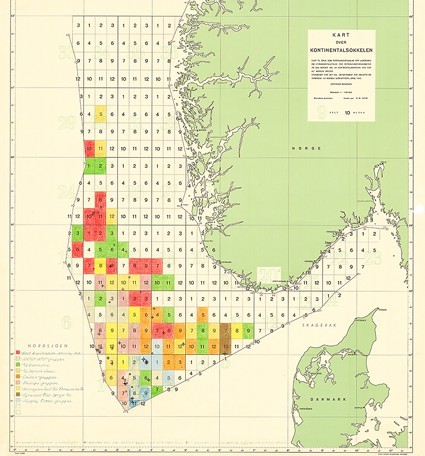
Norway marked 50 years this week since the first licensing rules were implemented by royal decree.
The objective was to ensure the country could secure thorough exploration but also reap the financial rewards.
The Norwegian Petroleum Directorate (NPD) has issued an image of the first continental shelf map for the country made in 1965.
Director general Bente Nyland said:”The assessments made at the time were sound. They had a clear vision of how any potential resources, and management thereof, would benefit the Norwegian people.
“This slow, incremental opening of the shelf means that, 50 years later, we have yet to reach the halfway point of the resources we believe are in place.”
The first licensing round was announced on April 13, 1965.
A total of 278 blocks were included in the announcement, making it the most extensive in Norwegian oil history.
The country’s sector of the continental shelf includes a total of 315 blocks or part of blocks.
The only blocks excluded in the first licensing round were those that bordered the median line toward Denmark and Sweden.
The application deadline in 1965 was in June of the same year and when the deadline expired, there were 11 applications.
Applicants showed interest in a total of 81 blocks, 78 of which were awarded to 9 companies.
It was Esso’s discovery of traces of hydrocarbons in Balder in production licence 001 (block 25/11) in 1967 which attracted attention.
The main field was first discovered in 1974 and production started in 1999.
However Mr Nyland said if the operator had access to the data that was available in 2010 it would have likely drilled in a different location.
He said: “If the operator Esso had had access to the data that was available in 2010, the well could have been drilled in a different location – and then Johan Sverdrup would have been the first commercial oil discovery on the Norwegian shelf.”
Instead, Ekofisk became the first commercial discovery, after 33 exploration wells. The discovery was made in 1969.
Recommended for you
